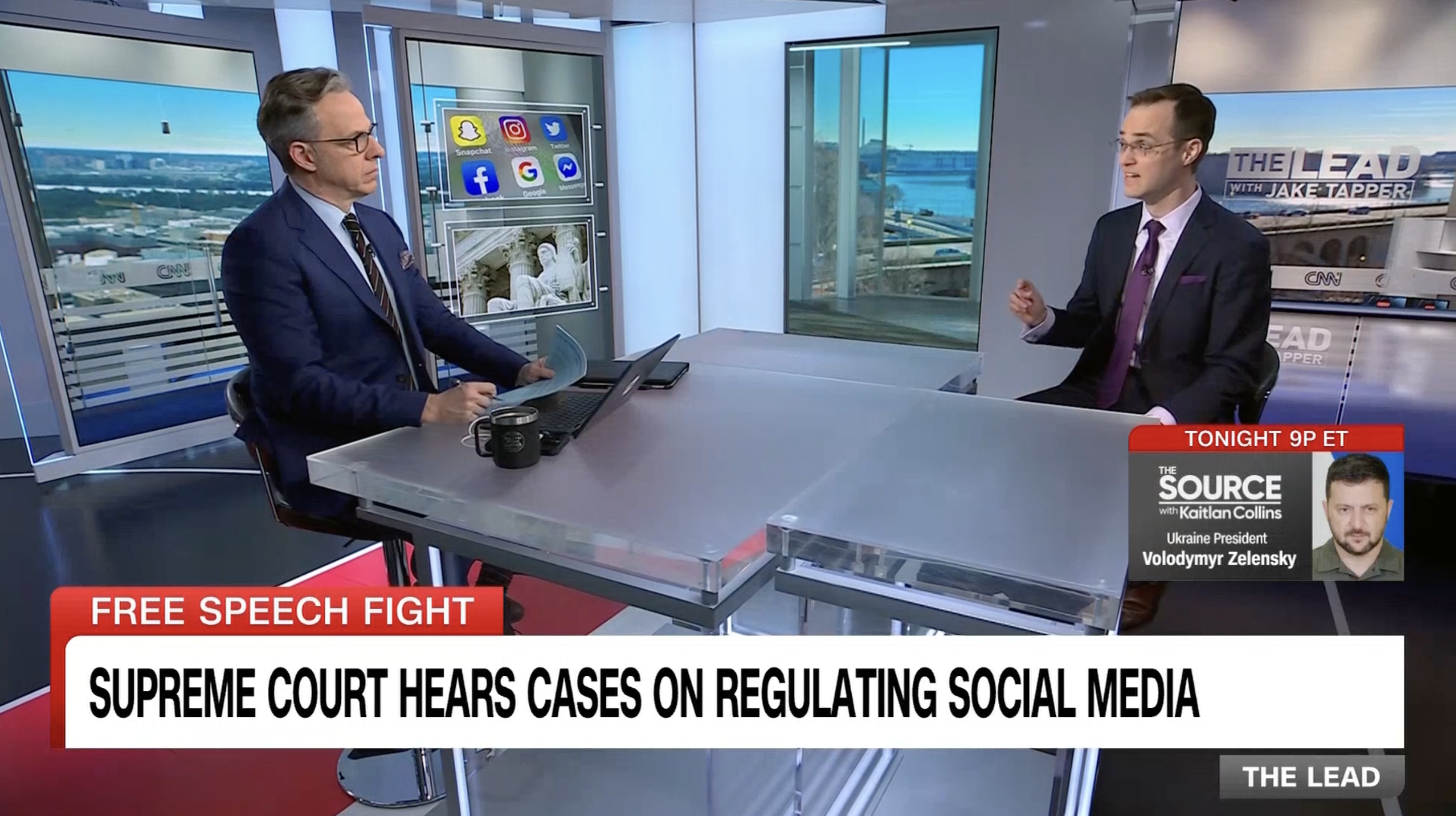Interview with MakerBot President Jenny Lawton: 3D Printing is Changing the Way We Think
 MakerBot is a five-year-old company located in Brooklyn, New York that has been at the forefront of riding the massive wave of consumer-level interest in three-dimensional printing.
MakerBot is a five-year-old company located in Brooklyn, New York that has been at the forefront of riding the massive wave of consumer-level interest in three-dimensional printing.
Three-dimensional (3D) printing is a process by which an individual can create tangible objects using computer-aided design (CAD) software and a computer hooked up to a 3D printer. After someone creates a design for a project with CAD software, they send the specifications to a desktop 3D printer, which then melts filaments of plastic to create layers to form the object. In the past few years, people around the world have been experimenting with desktop 3D printing to create everything from replacement toy parts to prosthetic hands for children.
MakerBot is the leader in the field of desktop 3D printing. Bre Pettis, a former middle-school teacher, and two of his friends Adam Mayer, a software developer, and Zach Smith, a hardware hacker, founded the company in 2009. Jennifer “Jenny” Lawton, MakerBot’s president, joined on in 2011 as a strategist for the company. Over the years, MakerBot has built an ecosystem that enables hobbyists, engineers, architects, DIYers, designers, inventors, schoolchildren and small businesses to create almost anything that comes to their fertile imaginations. The ecosystem consists of the Replicator line of 3D printers, the Digitizer Desktop 3D Scanner, which helps people to scan objects and share them online with others, CAD software and a Web site called Thingiverse.com, which enables members to share their designs with the world with Creative Commons licenses. More than 200,000 digital files that can be downloaded and manipulated or altered live on Thingiverse.com. Collectively, all of these designs have been downloaded millions of times.
The company also operates three retail stores in lower Manhattan, Greenwich, Connecticut, and Boston, where demonstrations, classes and sales take place.
Pettis, Mayer and Smith were able to get MakerBot off the ground with some initial seed and angel funding, and then in 2011 landed $10 million in venture funding from a round led by the Foundry Group. Then Stratasys, the publicly traded industrial 3D printer company, bought MakerBot last summer for $403 million. The two companies continue to operate independently, although each side is helping with each others’ growth. MakerBot estimates that it has sold more than 44,000 3D printers since they went on the market in 2009. Mayer and Smith no longer work at the company.
For her part, MakerBot President Lawton joined MakerBot after her friend Brad Feld, Foundry Group’s Managing Director, introduced her to Pettis (who remains as MakerBot’s chief executive officer.) Lawton is a serial technology entrepreneur who quit the field in 2001 to take care of her family and to own and run two bookstores and a café in Old Greenwich, Connecticut. She returned to the tech startup world to join MakerBot because she immediately saw how the company — and the phenomenon of relatively low cost 3D printing — would have a huge impact on everything from manufacturing and design to just about anything else that one could think of.
At MakerBot, she’s leveraged her own life experience as a successful entrepreneur to help build the company, sell it, and open the retail stores.
Pundits and market analysts believe this is just the beginning of a decades-long trend. Dozens of articles, a documentary, and a book by former WIRED Editor Chris Anderson predict that consumer-level 3D printing is poised to change the world of manufacturing and design and more. Various market research firms predict that the consumer 3D printing market will grow to at least a $10 billion in the next decade.
Of course every disruptive emerging technology changes the competitive landscape for businesses. Just as the Internet and file-sharing effectively ended the atom-based distribution of music, and forced the music industry to figure out how to re-build itself in the digital world, 3D printing is going to force a lot of different industries to re-think their own distribution and manufacturing strategies and business models.
The business challenge for companies is that they will have to distinguish for themselves where the line between personal use and infringement is, and how they can continue to thrive in a world where almost anyone can download and 3D print a copy of almost anything.
Some companies, such as LEGO and Hasbro, have dipped their toes into the world of 3D printing. Others are still trying to figure it out.
Tech and innovation advocates worry that the phenomenon will prompt incumbents to lobby Congress to enact laws that might crimp the emerging 3D industry’s growth.
That’s why Public Knowledge issued a white paper on 3D-printing and intellectual property in 2010 in an attempt to educate lawmakers on the promises and perils of the emerging technology. Each year, including this one, the non-profit holds a fair in the U.S. Capitol that brings dozens of industry players to Washington D.C. to showcase the industry’s potential to lawmakers.
The Disruptive Competition Project recently checked in with Lawton through a phone conversation at her office in Brooklyn, New York, where she discussed licensing, the likelihood of getting ripped off, Digital Millennium Copyright Act takedown notices, and the role of digital rights management in the world of 3D printing.
Q: What are the coolest uses of 3D printing?
A: I think one of the most interesting projects that I’ve seen it used for is the Robohands project, where kids are able to have prosthetics, or people are able to have prosthetics for almost no money. And usable prosthetics. That’s something that’s given affordable solutions to people very quickly.
Increasingly, we’ve seen people solve problems around the house. They make hooks, they make things to fix machines in the house, so if you’re missing a handle, you can make a handle. If you’re missing a part for a blender, you can make that part for the blender. You can make phone cases until the cows come home.
Some people have made bookshelf shelves. They’ve made coat hangers, and useful objects for the house. So there’s that. There are designers who have made their prototypes for projects. People at NASA have used the machines all the time for prototyping, like for the Mars Rover project.
Q: So in terms of making things like prosthetics, do the creators make them and test them until they’re ready to be used? Because if you think about making something that’s mission critical, you probably don’t want it to break in the middle of whatever you’re doing.
A: That’s such a good question. Because our machine is affordable, and the material is affordable enough so that you can make and test, and make and test, and iterate until you get to the right solution.
With the prosthetics, and the people who are using them, the people are actually iterating and improving on them. They’re the people who it’s most important to, and they’re making them even more functional and easier to use, and also easier to change. So kids are making things that go under their prosthetics to do specific tasks.
They’re having fun with them. They can have different color prosthetics. They’re working. It’s not at the rigorous level of an FDA-approved prosthetic. It costs them $5, versus the $20,000 that you might or might not spend for your child because they grow a lot.
Q: That’s an angle that I hadn’t even thought about. What does the FDA make about this?
A: Well, we’re not selling the prosthetics. People are making them for themselves. That’s where you get disruptive technology.
There are people making medical devices using 3D printing, and the FDA’s working with them. It creates affordability. It creates rapid iteration environments. It’s solution-oriented, so they’re happy to see people with solutions.
Q: What are some of the uses of the Replicator in education?
A: In education, we see teachers using 3D printers to make math manipulatives to demonstrate math concepts to kids. We had one teacher who used it to show kids how earth science works. They made houses and different things, so that when you flood a town, you see all the houses float away.
We have some curriculum that we’ve made. We’ve made a 3D-printable, dissectible frog so that if you don’t want to use live frogs to teach the kids, you can 3D print a frog that’s completely life-like and dissectible. And you can print them in all different colors!
We have a full-scale T-Rex dinosaur that you can print out for your classroom. We’ve just made the great pyramid of Giza, which shows you the four different surfaces, and shows what the pyramid looked like through all the different years. You can open it up and you can see what was inside of it. So you can create teachable tools. We have kids coming in and printing out stuff in the store that’s homework. So kids can print out the floorplan of their house. They’re learning about how to make things.
It’s taking over for shop in some places, it’s being used as art in other places. It’s being used to teach innovation, and 3D printers are being integrated into STEM initiatives.
Q: In one of your talks, you said that 3D printing will change the way people think. What do you mean by that?
A: From the time that I interviewed at MakerBot, it’s like the song that crawls into your brain, it won’t leave. From the time that you see a 3D printer work, when you think about something, like acquiring something in the future, you stop and say to yourself: “Can I make that? Or should I buy it?”
I have a 12-year-old, and a 15-year-old at home, and Emma, the 15-year-old likes to sew. I love saying to her: ‘Emma, think about all the different buttons you could make! You could make your own button line.’ And she can also make bracelets to match her outfits when she goes out at night. You can make earrings. Cole can print out his Mario achievements, and things like that. They play video games. You can print out the Minecraft stuff. Not only can they go online and do it, but they can actually get together and make something, which takes it to a whole new social element. It just changes the way you think.
A few weeks ago, Emma just said to me: ‘Well, we could just make that.’ And that’s a 15-year-old. She had to do a fundraiser for her fashion class the other day, and she texted me and said: ‘Let’s do something with MakerBot! They could do something with MakerBot!’ It changes your thought process.
Q: It’s a bit like the music business. Instead of going to the record shop, you can download something.
A: Absolutely. And think about the availability of music. Once you had iTunes, everyone could suddenly have music.
Q: Copyright, patent and trademark law arose out of existing technologies. This is another disruptive technology that doesn’t really fit into that framework. What are your thoughts on how current legal concepts like fair-use will operate within the world of 3D printing?
A: It’s not much different than the copy machine. All the same issues exist with the copy machine, as well as the same issues with Napster, to be honest with you.
So the hope in the industry in general, both on the people who are looking to use 3D printing in their business not just for making things, but also for marketing, and also for their business, the hope is that we’ve learned a lot from all of those experiences, and we’re going to have all of the correct controls and licensing in place.
All the licensing rules apply. You’re supposed to use the machine appropriately and legally. So it’s on the user to make sure that you’re not copying the designs illegally, and you’re not making something you’re not supposed to. It’s not on me, it’s on you. When you buy the machine, by the way, it says: “This is your problem, not my problem.”
Q: There was a really fascinating article in The New York Times recently about the Shapeways service enabling small businesses to sprout up selling small items. But on the other hand, once someone makes something, someone else could just rip them off and sell their product.
A: Yeah, that’s interesting, but we’re not seeing a lot of that. That exists no matter what. No matter what or how you make, someone can rip it off. If someone is going to rip you off, they’re going to rip you off.
This is a tool that enables entrepreneurs to come to market much faster, and much more inexpensively. You don’t have to go to soft tooling as fast, you don’t have to go to tooling maybe ever. You can make short manufacturing runs, depending on what you’re making. One of the good stories we have there is a company called Square Helper that makes a little device that holds your Square credit card swiper firmly in place when you’re making a transaction. He just makes those on his MakerBot. When the new iPhone comes out, he can have a new Square Helper that day, instead of having to wait six weeks to send the design to China to get first shots to be approved to make thousands of them, which he may never need. He’s in business that day with a new version of Square Helper.
Square itself was prototyped at a TechShop, and it was also prototyped in a non-traditional way before it went mass market.
Q: I recently read about someone who had a Replicator, and who was doing something on Thingiverse, and received a DMCA takedown notice. Have you heard from the entertainment industry, or anyone else, about the capabilities of your machines, and how they might impact their businesses?
A: I hear from a lot of different businesses asking lots of interesting questions about how 3D printing might impact their business. We get DMCA takedown notices – not a ton, but we get them now and then.
I will say that what you’re going to see in the next couple of years is going to be very, very interesting in terms of many industries having to think differently about their businesses because this technology does disrupt the design and creative process, and makes them think differently, and they seem pretty happy about it. I think it’s bringing an innovation cycle back into many businesses that need some refreshing.
Q: I recently read about Intellectual Ventures obtaining a patent for a [DRM system] to prevent illegal copying through 3D printers. Is that something that is feasible, or desirable?
A: In the next two years, you’re going to see a lot of interesting thinking happening. First off, there are patents coming up. Second off, people are looking at the question of what you need to lock down, and what you don’t need to lock down. What needs to be open, and what doesn’t need to be open? How are we going to protect ourselves, how are we going to protect customers, and customers are saying, How are you going to protect me? So there’s a lot of thinking going on.
We haven’t thought about it necessarily in terms of putting a powder in our filament, but we have a lot of discussions about how we can ensure that people are using our filament.
I used to talk about computer security all the time back in the days of the Internet, when we started that thing. It doesn’t matter, you can build a really high wall, a really sophisticated wall, and someone can always go over it. You have to balance practicality with likelihood of what’s going to happen. There needs to be a balance. If you lock down everything, and no one can do anything, then what good is the printer? You make it so that you can’t buy the plastic, well that’s not very helpful. The goal isn’t to sell the printers. It’s to get people to use it.
Q: If I’m a maker, and I want to use a 3D printer, and I want to start a business, should I be worried about being sued for infringing upon other people’s trademarks?
A: My answer to that is a little circumspect. You shouldn’t be worried if you’re doing your homework. If you’re not knocking someone off, then you shouldn’t be worried about it. If you are knocking someone off, then yeah, you should be worried about it.








